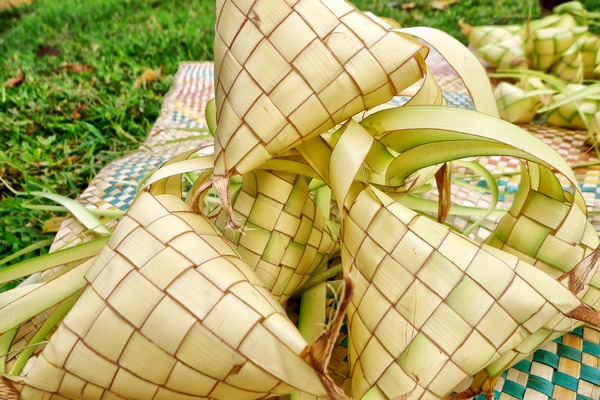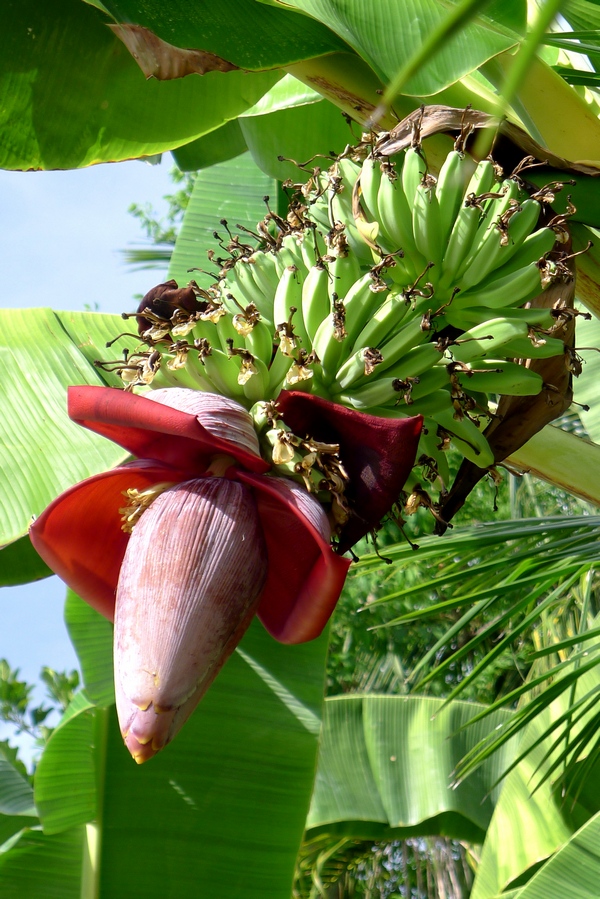
BESIDES Inasal or lechon, Cebu is known for its pusô. “Hanging rice,” it is also called, usually by non-Cebuanos.
But what is pusô really?
Basically, it is cooked rice packed in a woven coconut leaf that looks like the “puso sa saging,” or the heart-shaped banana blossom.
The pusô is a picnic staple among Cebuanos because of the convenience it offers.
It is an ingenious way to transport rice as one does not need to place it in a container.
The tightly woven coconut leaves protect the rice from dirt and dust.

Puso sa saging or banana blossom
One can lay it on a table without a plate.
Cut the pusô in half and you can easily bite into the rice while holding the coconut leaf side.
So how did the pusô come about? Since this column is a lighthearted account of the culinary heritage or traditions of Cebu, I beg your permission to cite scholarly works for our edification on this subject—not to bore you with data, but to reach a real appreciation of the pusô.
Most of the information we have about the Cebuano way of life, be it about anatomical parts of the body, feasts, way of dressing, and the food we ate in the 15th century would have been unknown to us if not for the arrival of Ferdinand Magellan who brought with him the Italian chronicler Antonio
Pigafetta.
But too bad, there was no mention of “pusô” in Pigafetta’s account.
But Fr. Fransisco Ignacio Alcina, a Jesuit priest assigned in Cebu from 1649 to 1653, wrote about the “pusô” in his book “History of the Bisayan Islands” (in Spanish) in 1668:
“During the rituals, the people serve pusô not as everyday victual but as important instruments in many animist offertory practice.
They use pusô offerings in the paganito rituals to communicate with the diwata.”
In 2000, Dr. Reynaldo Bontuyan Inocian of the Cebu Normal University wrote a monograph (a detailed written study of a single specialized subject) titled “Pusô as a Ritual Object.”
Pusô makers are called the “manlalah.”
Dr. Inocian writes that the pusô started as an offering during rituals for a good harvest or for appeasing the spirits.
This together with unsalted pork and rice cakes composed a “hikay” or ritual for the spirits.
In upland barangays like Taptap, these rituals are still practiced, some on a lesser scale maybe, but the tradition lives on.
The ritual offering to the diwata is still done in the Tagjaguimit in the mountains of Naga.
Most of us are familiar with the “kinasing” design or heart-like shape pusô.
Dr. Inocian writes that there are actually five more designs of the pusô: binaki, frog-like; manan-aw, like an orchid; binosa, shaped like a small glass; tinigib, shaped like a chisel; and badbaranay, which means “opening” or “unraveling.”
Notice that all the shapes represent nature; and they all have symbolisms that can communicate their messages to the spirit.
In mountain barangays, weaving a pusô is part of the early crafts that a child learns.
To weave is to lah, one who weaves pusô is called a manlalah
. To weave a pusô: First step is to remove the midrib of a coconut leaf with the use of the thumb nail.
Next, the leaves are slashed to desired lengths. The third part is the actual weaving.
There is a different way of weaving each design.
Finally, the woven pouch is tightened so the rice won’t spill.
When enough pusô is woven, the cooking starts by pouring rice halfway into each pouch.
The leaves are then tightened to close and placed inside a big pan of boiling water. The lid is placed over the pan and the rice is left to cook for 30 minutes.
Then the pusô is removed from the pan and wiped clean.
The next time you eat a pusô, think of all that effort that went into it.
Truly, as the Cebuana writer Corazon Almerino said “Every time people eat pusô, they become part of a heritage celebrating itself.”

